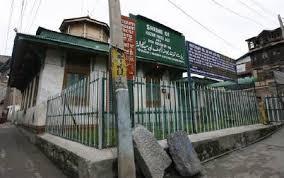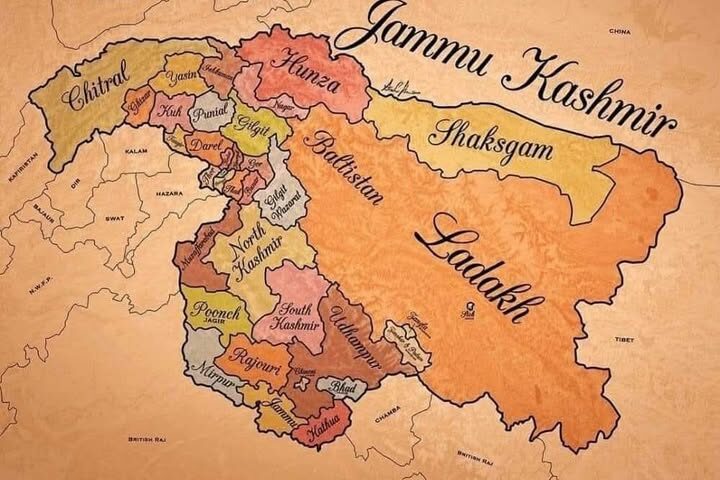Researchers suggest that Jesus came to Rozabal and some believe that Moses is interred in the shrine of Hazrat Bibi Arifa
 Deep in the mountains of the North Kashmir district of Bandipora, near an old tree, lies a Jewish grave that dates back to the pre-Islamic period. It lies inside the shrine complex of Hazrat Bibi Arifa, a lady saint locally known as ‘Ded Mouj’. Hundreds of devotees would visit the remote hilly village of Butho, till militancy took over the region two-and-a-half decades ago. A section of Jews believes that the grave belongs to their most revered Prophet, Moses, who brought them back to Palestine some 4,000 years ago.
Deep in the mountains of the North Kashmir district of Bandipora, near an old tree, lies a Jewish grave that dates back to the pre-Islamic period. It lies inside the shrine complex of Hazrat Bibi Arifa, a lady saint locally known as ‘Ded Mouj’. Hundreds of devotees would visit the remote hilly village of Butho, till militancy took over the region two-and-a-half decades ago. A section of Jews believes that the grave belongs to their most revered Prophet, Moses, who brought them back to Palestine some 4,000 years ago.
Locals, however, strongly contest the grave belonged to the Jewish Prophet. Inside a small cupboard in his house adjacent to the shrine, Ghulam Muhammad Reshi, custodian of the shrine, maintains a diary with entries of many visitors who visited this picturesque village from countries as far as Uganda, Thailand, France, Germany and America. They had read about the “burial site of Moses” from some books and articles on the web. The village remains cut off from the rest of the valley in winters. “I told them they were mistaken, and Musa (Moses) is not buried in the shrine here,” says Reshi. The direction of the grave, however, is contrary to how the Muslims bury their dead. “Every year around twenty foreigners, mostly Christians and Jews used to visit the village and spend time inside the shrine,” he says. Some eight years ago, an American woman stayed in the village for three days spending nights meditating inside the shrine.
According to Reshi the myth was first circulated when a scholar, Dr Abdul Aziz Kashmiri, researching ‘Moses in Kashmir’ visited the village in 1962 and met his grandfather. “My illiterate grandfather had just told Dr. Aziz that he has had heard from elders that Moses is buried here,” Reshi pointed out. But Aziz took this as an authentication, without going through other scholarly evidences
The shrine of Bibi Sang Arifain Butho also houses the grave of Hazrat Neek Reshi. The village elders say he had come to the village to become the disciple of Bibi Arifa. Another grave in the shrine belongs to Navroz Baba.
“He came to Bandipora from Gilgit, where he was a tax collector,” says Reshi. He was told that there was a rich old man in this village. “He came to this village to collect tax from Neek Reshi, but once he collected money from him, he lost his eyesight,” Reshi claims. Eventually, he became a disciple of Neek Reshi and settled in the village.
The village, with a population of around 700 people, has 100 households. The tradition is that each household looks after the shrine throughout a year in a manner that all the households are in-charge on rotation.
Numerous books have been published on Christ, some of them claiming that Jesus Christ had visited the land, which later came to be known as Kashmir, or ‘Cashmire’, its ancient name. Some researchers have suggested that Jesus lies buried at Rozabal.
Aziz Kashmiri had claimed that Kashmiris’ ancestors were one of the lost tribes of Israel. He also claims another pre-Islamic grave in the heart of old city as that of Jesus. Locals here as well refute his claim. Evidence from Buddhist sources however, have recorded a conversation deep in Bandipora mountains between then King of Kashmir and a foreigner some 4,000 years ago. The teachings of the foreigner, passed down through oral traditions, relate to oneness of God, which are indicative of the teachings of Judaism.
According to Pandit Hargopal Koul’s ‘Guldasta-I-Kashmir’, Kashmiri Pandits are the highest class of Aryans. Pandit Ram Chand Kak, former Prime Minister of Jammu and Kashmir during Maharaja Hari Singh’s rule, says, ‘Moses is a very common name in Kashmir. There are many castes and tribes among Muslims and Hindus, which are mentioned in the Bible. Their ways and habits, features, shapes, morals, and character resemble those of Israelis.
At Bijbehara near Anantnag town, there is a stone called ‘ka ka pal’ (ka in Kashmiri means eleven) resembling eleven tribes of Israel. Such a stone is also to be found at Baramulla.
Civil servant turned writer, Kashmiriologist, Pervez Dewan, in his book A history of Kaskmir, writes, “There can be no doubt that Jews used to visit ancient pre-Islamic Kashmir at the rate of one or two visitors a year. They were particularly honoured guests. This explains their stamp on some aspects of Kashmiri life. Some of them must have settled in Kashmir and accepted Hinduism (and later Islam). That explains why some Kashmiris have the ‘prominent noses’ that have intrigued European travellers so much.”
His study also highlights Hebrew words in the Kashmiri language and makes a pointed reference some Jewish customs, food habits and beliefs found in Kashmir. On the specific question of the visit of Lord Jesus and Prophet Moses, Dewan banks on the manuscripts of the Bhavishya Maha Puran, Mullah Nadiri’s Tareekh-e-Kashmir and an ancient Buddhist manuscript in the Hemis caves in Ladakh. “If these documents have not been tampered with, then there can be no doubt but that Lord Jesus and Lord Moses have lived for at least a while in Kashmir and Ladakh,” he concludes. Fact or not, belief keeps what would be the holiest shrine of Judaism and the myth of Jesus’ vists alive in the heart of a remote Muslim-dominated Kashmiri village.



